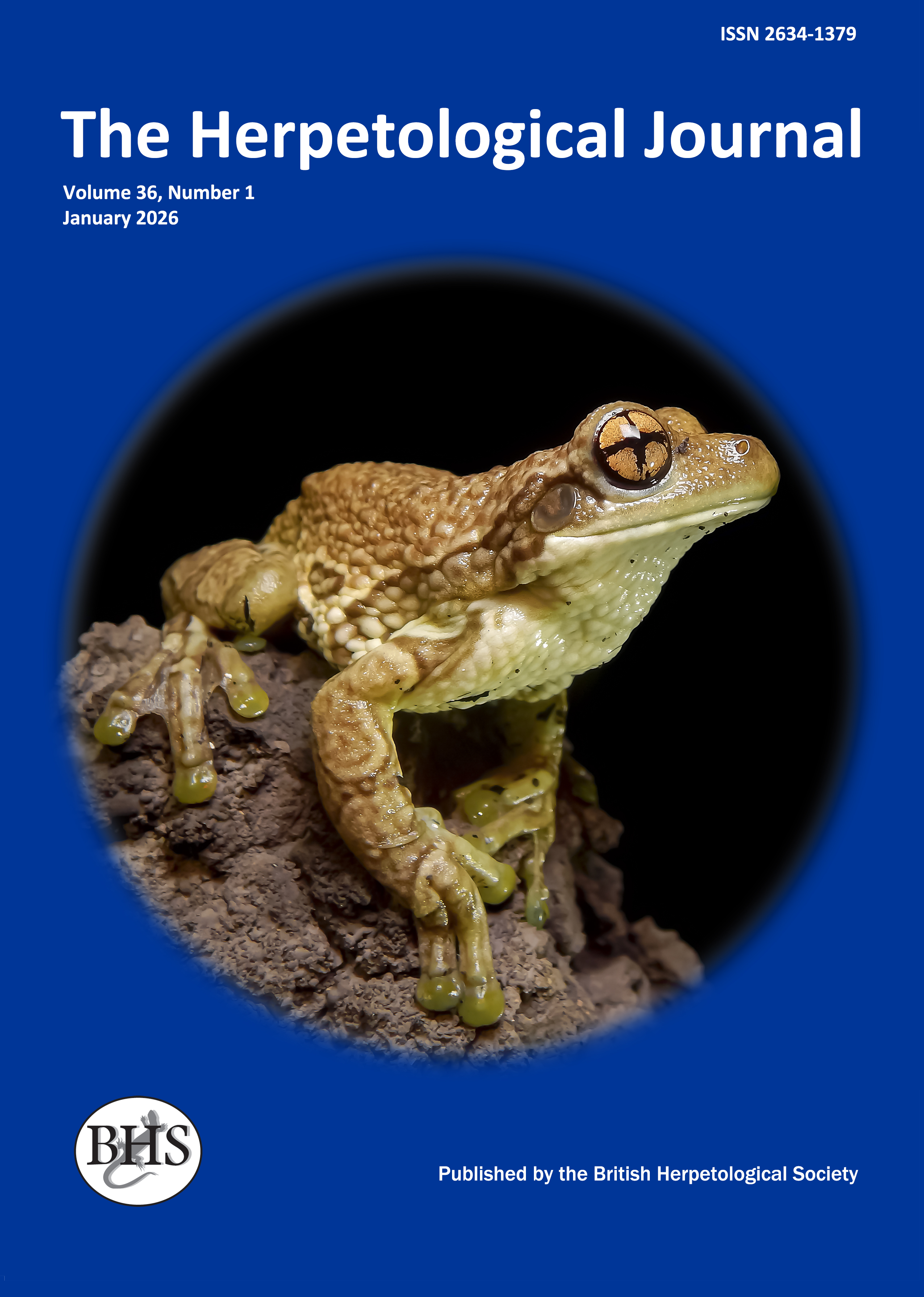
The Herpetological Journal
The Herpetological Journal is the Society's prestigious quarterly scientific journal. Articles are listed in Biological Abstracts, Current Awareness in Biological Sciences,Current Contents, Science Citation Index, and Zoological Record.
ISSN 0268-0130
2023 Impact Factor for the Herpetological Journal is 1.1, with the Journal sitting just below Quartile 2 in Zoology, at percentile 46.9
pdf 04. On phylogenetic relationships within Dendrotriton (Amphibia: Caudata: Plethodontidae) is there sufficient evidence
1304 downloads
Open Access
pp.55-65
Authors: Mark Wilkinson
Abstract: Previous phylogenetic analyses of the relationships among five Central American salamanders of the genus Dendrotriton are reviewed. The available data was reanalysed using parsimony under a variety of analytical treatments. The results are highly sensitive to (I) the coding method used to convert quantitative characters into discrete character states; (2) different scalings (weighting) of multistate characters; and (3) the omission or inclusion of potentially problematic characters. Explorations of length differences between most parsimonious trees and selected less parsimonious alternatives reveal that under each treatment, most parsimonious trees are only marginally more parsimonious than alternatives and that Bremer support for the clades occurring in MPTs is always low. Tree length distributions are not highly left-skewed as would be expected of phylogenetically informative data. These analyses suggest that there is little phylogenetic signal in the available data and that these data provide little basis for well supported phylogenetic inferences. Both parsimony and compatibility-based randomization tests confirm this interpretation. The null hypotheses that the data are not significantly different from phylogenetically uninformative randomly permuted data cannot be rejected for any of the analytical treatments. Given failure to reject the null hypothesis, phylogenetic hypotheses for Dendrotriton based on the available data are uncompelling. Additional data are needed. Results of the randomization tests are consistent with the view that there has been extensive homoplasy in bolitoglossine salamanders.

